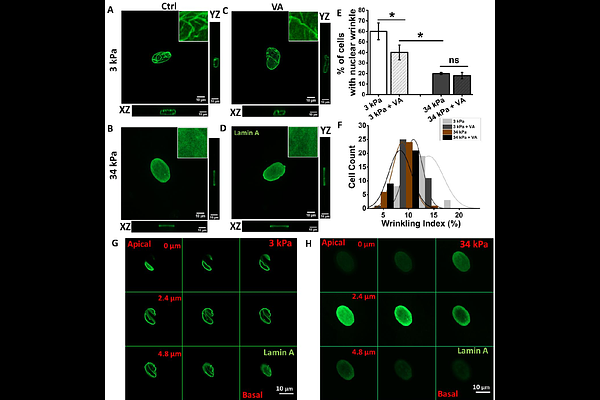Histone acetylation alters nuclear morphology and architecture of human mesenchymal stem cells in rigidity dependent manner

Histone acetylation alters nuclear morphology and architecture of human mesenchymal stem cells in rigidity dependent manner
Majumder, A.; Joshi, R.; shah, D.; Venkatesh, K.
AbstractNuclear morphology which is closely linked to various cell functions and disease states, is known to be modulated by mechanical stimuli and chromatin modifications. However, the combined effects of substrate rigidity and chromatin modifications remain largely unexplored. In this study, we investigated the interplay between substrate rigidity and histone acetylation, mediated by the histone deacetylase inhibitor (HDACi) valproic acid (VA), in modulating nuclear morphology in human mesenchymal stem cells (hMSCs) cultured on substrates with varying rigidities. We found that VA-induced chromatin decondensation diminished the effects of soft substrates on nuclear morphological parameters, a change not observed on stiff substrates. Furthermore, we showed that the reduction in nuclear stiffness with VA treatment on both substrates was independent of lamin expression, highlighting chromatin decondensation as a key determinant of the observed change in nuclear stiffness. In addition, we demonstrated that soft substrates induced significant nuclear wrinkling, which was alleviated by HDACi treatment, while no such effect of VA was observed on stiff substrates. Together, our findings suggest that chromatin remodeling via HDACi can override substrate-dependent nuclear mechanotransduction on soft substrates, offering new insights into the epigenetic regulation of nuclear mechanics with potential implications for pathologies associated with nuclear morphology.